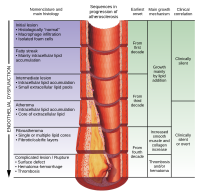
Protective effects of camellia oil (Camellia brevistyla) against indomethacin-induced gastrointestinal mucosal damage in vitro and in vivo
Sign Up to like & getrecommendations! Published in 2019 at "Journal of Functional Foods"
DOI: 10.1016/j.jff.2019.103539
Abstract: Abstract Accumulating evidence reveals that nonsteroidal anti-inflammatory drugs (NSAIDs), such as indomethacin, cause oxidative stress and inflammation, which consequently cause gastrointestinal (GI) mucosal damage. Camellia oil, a common edible oil used in Asia, has excellent… read more here.
Keywords: camellia oil; mucosal damage; indomethacin induced; oil ... See more keywords

Protective Effect of Camellia Oil (Camellia oleifera Abel.) against Ethanol-Induced Acute Oxidative Injury of the Gastric Mucosa in Mice.
Sign Up to like & getrecommendations! Published in 2017 at "Journal of agricultural and food chemistry"
DOI: 10.1021/acs.jafc.7b01135
Abstract: Camellia oil, a common edible oil in Taiwan and China, has health effects for the gastrointestinal tract in folk medicine, and it contains abundant unsaturated fatty acids and phytochemicals. However, the preventive effect of camellia… read more here.
Keywords: camellia oil; ethanol induced; injury; oil ... See more keywords

Fabrication, characterization, and purification of nutraceutical diacylglycerol components from Camellia oil.
Sign Up to like & getrecommendations! Published in 2022 at "Journal of food science"
DOI: 10.1111/1750-3841.16261
Abstract: Converting triacylgycerols (TAGs) from edible oils and fats into structured diacylglycerols (DAGs) is meaningful for reducing obesity. Camellia oil, rich in linoleic acid, has the potential to form structured linoleic acid-1,3-diacylglycerol (LA-1,3-DAG) nutrients in the… read more here.
Keywords: characterization purification; oil; dag dag; fabrication characterization ... See more keywords

Identifying camellia oil adulteration with selected vegetable oils by characteristic near-infrared spectral regions
Sign Up to like & getrecommendations! Published in 2017 at "Journal of Innovative Optical Health Sciences"
DOI: 10.1142/s1793545818500062
Abstract: In this paper, a methodology based on characteristic spectral bands of near infrared spectroscopy (1000–2500nm) and multivariate analysis was proposed to identify camellia oil adulteration with veg... read more here.
Keywords: camellia oil; near infrared; identifying camellia; oil adulteration ... See more keywords

Camellia oil Enhances Plasma Antioxidant Metabolism and Improves Plasma Lipid Metabolism in High-fat Diet-fed Rats
Sign Up to like & getrecommendations! Published in 2022 at "Natural Product Communications"
DOI: 10.1177/1934578x221081368
Abstract: Living on a high-fat, high-calorie, and high-protein diet for a long period may compromise human immunity due to the long-term accumulation of free radicals and plasma lipids. The antioxidant and lipid-lowering compounds (ie polyphenols and… read more here.
Keywords: metabolism; oil; fed rats; group ... See more keywords

Camellia oil (Camellia oleifera Abel.) treatment improves high-fat diet-induced atherosclerosis in apolipoprotein E (ApoE)−/− mice
Sign Up to like & getrecommendations! Published in 2022 at "Bioscience of Microbiota, Food and Health"
DOI: 10.12938/bmfh.2022-005
Abstract: Atherosclerosis is the main cause of cardiovascular diseases, and healthy dietary habits are a feasible strategy to prevent atherosclerosis development. Camellia oil, an edible plant oil, exhibits multiple beneficial cardiovascular effects. Our previous study showed… read more here.
Keywords: oil; atherosclerosis; apoe mice; camellia oil ... See more keywords

Combining effect of camellia oil and squalene on hyperlipidemia-induced reproductive damage in male rats
Sign Up to like & getrecommendations! Published in 2022 at "Frontiers in Nutrition"
DOI: 10.3389/fnut.2022.1053315
Abstract: Introduction Camellia oil (CO), a common edible oil in China, contains a variety of active ingredients. In this study, we explored the combining effect and optimal feeding time of CO and squalene on hyperlipemia-induced reproductive… read more here.
Keywords: induced reproductive; effect; oil; reproductive damage ... See more keywords

Preparation of highly efficient p-doped porous camellia shell-based activated carbon and its adsorption of carotenoids in camellia oil
Sign Up to like & getrecommendations! Published in 2022 at "Frontiers in Nutrition"
DOI: 10.3389/fnut.2022.1058025
Abstract: The vegetable oil industry is limited by the high cost of the refining process, and the camellia shells (CS) are beneficial to the development of the industry as a biomass raw material for camellia oil… read more here.
Keywords: adsorption; doped porous; adsorption carotenoids; camellia oil ... See more keywords

Optimization of Physical Refining Process of Camellia Oil for Reduction of 3-Monochloropropane-1,2-Diol (3-MCPD) Ester Formation Using Response Surface Methodology on a Laboratory Scale
Sign Up to like & getrecommendations! Published in 2023 at "Molecules"
DOI: 10.3390/molecules28083616
Abstract: Refined and deodorized camellia oil has been reported to contain a high amount of 3-monochloropropane-1,2-diol esters (3-MCPDE) due to the high-temperature deodorization step. To reduce 3-MCPDE in camellia oil, the physical refining process of camellia… read more here.
Keywords: temperature; refining; camellia oil; methodology ... See more keywords

Transcriptome Analysis of the Late-Acting Self-Incompatibility Associated with RNase T2 Family in Camellia oleifera
Sign Up to like & getrecommendations! Published in 2023 at "Plants"
DOI: 10.3390/plants12101932
Abstract: The Camellia oil tree (Camellia oleifera Abel.) is an important nonwood forest species in China, and the majority of its cultivars are late-acting self-incompatibility (LSI) types. Although several studies have examined the mechanism of LSI,… read more here.
Keywords: oil tree; analysis; self incompatibility; camellia oil ... See more keywords